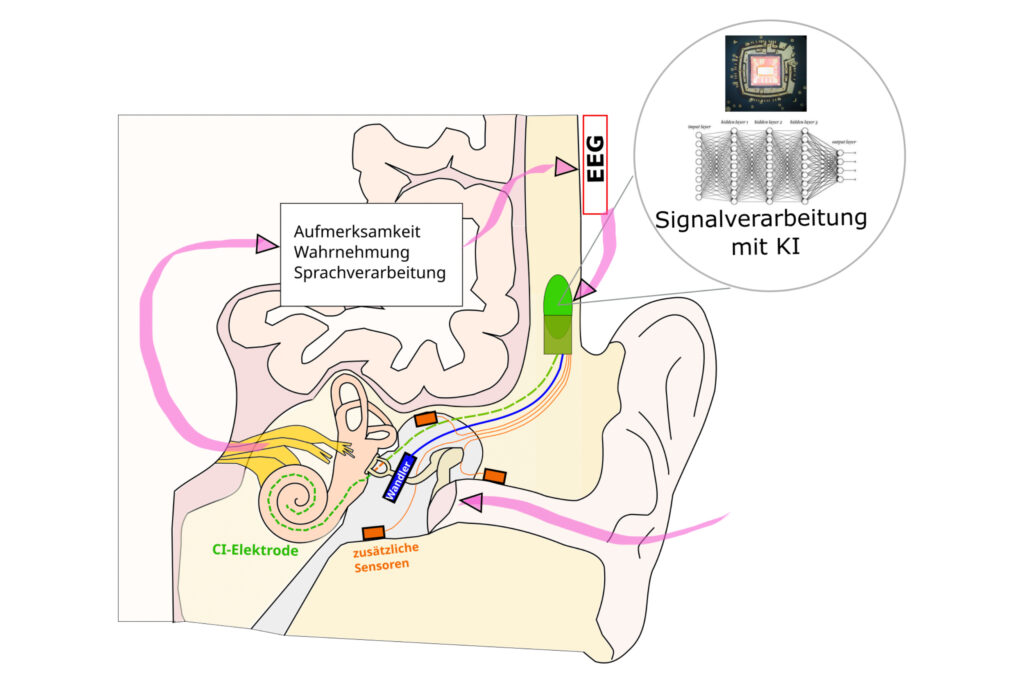Future hearing systems will require a platform for multisensory, fully implantable human-machine interfaces that can compensate for individual or age-related hearing loss. They use microelectronically supported AI processing and incorporate EEG markers for attention, perception and speech comprehension, or augment it using neuromodulation. At the same time, implanted sensors record important vital parameters as a monitoring and emergency system.
The aim of this project is to design a hearing system of the future: a platform for multisensory, fully implantable human-machine interfaces that can compensate for individual or age-related hearing loss or augment it by means of neuromodulation using microelectronically supported AI processing and incorporating EEG markers for attention, perception and speech comprehension. At the same time, implanted sensors will record important vital parameters in order to provide a monitoring and emergency system to older or previously ill users of the hearing system.
Platform as a basic system
The platform to be developed in the project as a basic system for multisensory systems will initially addressed using the example of implantable hearing aids, as the greatest market potential is seen in this area. At the same time, the potential of intelligent EEG-supported fitting will also be investigated for cochlear implants (CI). The individual tasks in the project are therefore the development of the AI algorithms for EEG and acoustic processing, the integration of the vital sensors, the design of a chip that provides these algorithms and sensor interfaces with low power consumption, and the biocompatible system integration. This entire process is closely linked to clinical practice, e.g. the EEG algorithm is aligned with clinical patient measurement data.
Commercial exploitation
On the one hand, the commercial exploitation of this hearing system is aimed at the further technological development and enhancement of the existing product portfolio of manufacturers of hearing aids or cochlear implants with disruptively innovative components and functionalities. On the other hand, this hearing system also addresses people who previously refused to use a conventional hearing aid for anatomical or aesthetic reasons. In addition, the project offers opportunities for further research in the field of neurocognition and speech development. The project results can be incorporated into future developments in the field of integrated sensor systems and sensory implants.
Prof. Dr.-Ing. Christian Georg Mayr I TUD Dresden University of Technology, Chair of Highly-Parallel VLSI Systems and Neuro-Microelectronics
- Thomas Zahnert | University Hospital Carl Gustav Carus and Faculty of Medicine Carl Gustav Carus, TUD Dresden University of Technology
- Tobias Reichenbach | Chair of Sensory Neuroengineering, FAU Erlangen-Nürnberg
- Wolfgang Fischler | MED-EL Innsbruck, Austria (associated partner)
- Detlef Billep | EDC Engineering GmbH, Chemnitz
- Mario Baum | Fraunhofer Institute for Electronic Nano Systems ENAS, Chemnitz

